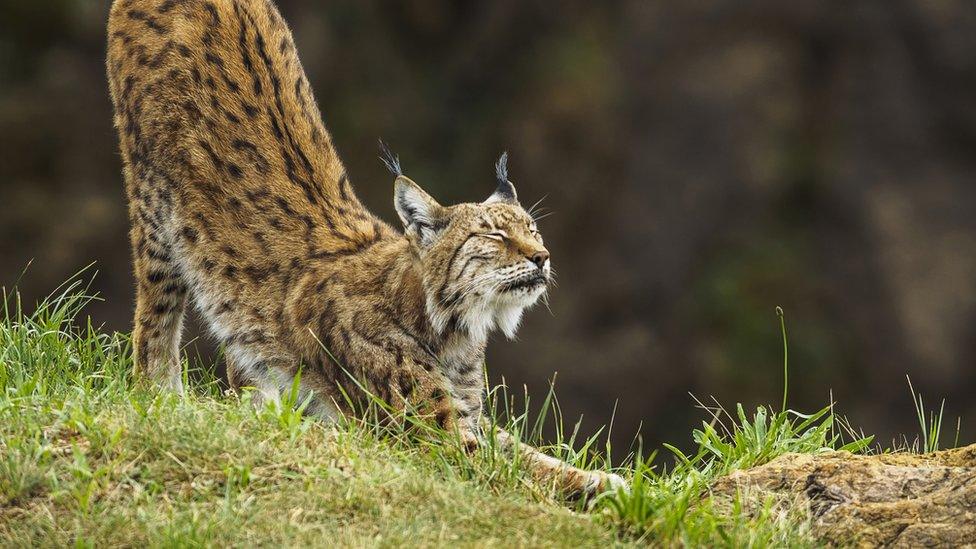Scotland reveals 100-year rewilding plan to boost biodiversity
- Published
- comments

There are calls to try to reintroduce the lynx to more areas
Conservationists and the Scottish National Trust have announced a 100-year rewilding plan.
Over the next century they aim to work towards restoring habitats and boosting biodiversity.
The plan includes improving up to 200 acres of land in a hope different species of all kinds will grow, breed and return to the land.
Plans are focussing on one site in particular in Scotland, at Kelton Mains, on the National Trust's Threave Estate.
The River Dee flows through southern Aberdeenshire to reach the North Sea
Named the Threave Landscape Restoration Project, the first steps of the plan are to un-drain parts of the land.
The land is a floodplain for the River Dee - this is the area at risk of flooding when the water level in the river rises above its banks.
Much of the land has been drained to prevent that flooding from happening. Reversing that process and restoring the landscape will allow water to flow in a more natural way.
According to the Trust, better-flowing water will mean better wetlands, and better wetlands attract more wildlife such as ducks, geese and swans.
Better wetlands would mean more cuties like this would make homes there, this is a signet - a baby swan
The plan is also to plant lots more trees, with an aim of creating 74 acres of native woodland.
Conservationists have said their project is to balance the recovery of nature with the needs of farming.
According to Dr Sam Gallacher, who is in charge of the operation, both researchers and other experts have been working on the 100-year plan for the past four years.
They announced their plan on International Day for Biological Diversity, earlier this week.
Studying the whole site, we have put together both an immediate and long-term plan to help kickstart and support natural processes, but also use this site as a massive experiment to help us find best practice and methods that we hope will be useful and inspire others in similar settings whether in Scotland or further afield. It will be an exciting experience for our visitors and members to learn and engage with landscape restoration in action and showcase the work our charity does to protect Scotland's natural heritage,
The project will be funded by Galloway Glens Landscape Partnership Scheme and the National Lottery Heritage Fund.
Some conservationists in Scotland have been asking the Scottish parliament members to make commitments to re-wilding.
These commitments include re-homing beavers, as well as considering the re-introduction of the Eurasian lynx to Scotland, where there is both a suitable habitat for the creatures and local support.
- Published29 October 2019
- Published21 May 2021
